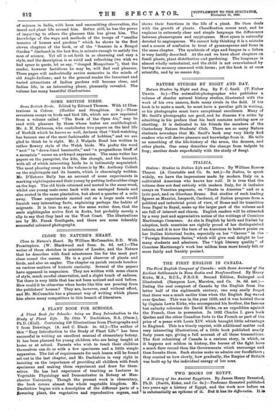SOME BRITISH BIRDS.
Some British Birds. Edited by Edward Thomas. With 12 Illus- trations in Colour. (Hodder and Stoughton. 6s.)—These seventeen essays on birds and bird life, which are now reprinted from a volume called "The Book of the Open Air," may be read with pleasure by those whose tastes are ornithological. Mr. A. H. Patterson, who contributes two papers on the bird life of Norfolk which he knows so well, declares that "bird-watching has become one of the most fashionable of hobbies," and we are glad to think he is right. Mr. J. Walpole Bond has written in rather flowery style of the Welsh birds. We prefer the word " nest " to "down-lined bassinette," and "a prognathous bluff of a mountain" seems an awkward expression. The same writer has papers on the peregrine, the kite, the chongh, and the buzzard, with all of which interesting birds he is intimately acquainted. The most pleasing essay in the volume is by Mr. Anthony Collett on the nightingale and its haunts, which is charmingly written. Mr. D'Esterre Baily has an account of some experiments in marking nightingales and their young by putting indiarubber rings on the legs. The old birds returned and nested in the same wood, whilst one young male came back with an unringed female and also nested in the same plantation, but about a quarter of a mile away. Those experiments carried out on a large scale would furnish very interesting facts, explaining perhaps the habits of migrants. It is true to say, as the same writer does, that the male nightingales arrive first in flocks, but probably merely a slip to say that they land on the West Coast. The illustrations are by Mr. Frank Southgate, and there are some tolerably successful coloured photographs.
































































 Previous page
Previous page